18 Nov 2013
E-Cigarettes Secretly Used To Hide Drug Use
The e-cigarette is a modern invention and an alternative to tobacco cigarettes. They were designed to allow people to smoke and to get nicotine into the bloodstream without inhaling all of the toxins found in tobacco. E-cigarettes may be helping people to quit smoking, and because they do not produce actual smoke, they may also allow people to get their nicotine without affecting the people around them.
On the surface, it seems that e-cigarettes are a great invention that can help people. Unfortunately, there are downsides to these fake cigarettes, not least of which is the fact that they can be used to smoke illegal drugs, like marijuana. Because of the way they work, someone can smoke pot using an e-cigarette without being detected.
The E-Cigarette Revolution
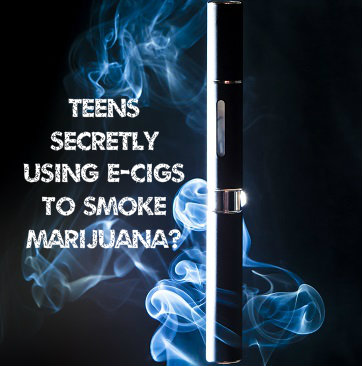 An e-cigarette is different from a traditional cigarette in that it does not use tobacco. Instead, it uses batteries and a liquid solution of nicotine. The battery heats and vaporizes the solution so that the user inhales and exhales vapors, rather than smoke. Because nicotine is the only ingredient, the user is also not inhaling all of the additives in tobacco that are so harmful, such as tar, acetone and arsenic.
An e-cigarette is different from a traditional cigarette in that it does not use tobacco. Instead, it uses batteries and a liquid solution of nicotine. The battery heats and vaporizes the solution so that the user inhales and exhales vapors, rather than smoke. Because nicotine is the only ingredient, the user is also not inhaling all of the additives in tobacco that are so harmful, such as tar, acetone and arsenic.
Although nicotine is still a drug, and one that is harmful and addictive, smoking an e-cigarette is much less dangerous than smoking tobacco cigarettes. It is also less harmful to others around the smoker because there is no secondhand smoke. Without the offensive fumes, it may be possible for people to smoke using e-cigarettes in areas that are normally restricted to smokers.
For the above reasons, e-cigarettes are set to become big sellers in the U.S. and elsewhere. Some experts are even predicting that they will start to outsell real cigarettes within a decade. E-cigarettes are already big business in Europe. The European Parliament recently rejected a proposal to regulate them as medical devices, which would have meant tight restrictions on sales.
E-Cigarettes Being Used To Smoke Marijuana
Although e-cigarettes may have been created as healthier, alternative delivery devices for nicotine and to help smokers kick the habit, clever drug users have already crafted them for different uses. The cartridge of liquid nicotine solution that goes into an e-cigarette can easily be replaced by any liquid. Any substance can be vaporized and inhaled using one of these devices.
Most commonly, abusers are using a cartridge with a liquid solution of THC, the main psychoactive substance found in marijuana. With liquid THC in an e-cigarette, a person can get high and yet appear to be legally inhaling legal, nicotine vapors. The same property of e-cigarettes that allows users to smoke without offending those around them, allows for covert use of illicit drugs. The vapors produced by the e-cigarette are odorless. A person can get high without arousing suspicions.
Teens Smoking Marijuana With No Recognizable Odor
While an adult covertly smoking pot is a concern, a bigger one is the use of marijuana by teenagers. As the presence of e-cigarettes proliferates, teens are finding that they make an excellent vehicle for smoking pot. Smoking marijuana produces a characteristic odor that clings to clothes, hair and fingers. With e-cigarettes, a teen can inhale liquid THC, get high, and never give off the usual signs. Parents who are concerned that their teens may be using marijuana will have to be more vigilant and look for other signs of intoxication.
E-Cigarettes Targeting Young People?
Another concern regarding teens and e-cigarettes is that these new devices may be targeting young people. E-cigarettes can be sold with different types of nicotine cartridges with flavors like strawberry, peach and grape. They are also sold online, which makes it easier for kids to get a hold of them. If kids start using these devices at a young age, they may be more inclined to try other substances. In other words, e-cigarettes may become the new gateway drug. The problem has already begun, as statistics indicate that the number of middle and high school students using e-cigarettes is rising.
It seems that e-cigarettes have a place in our modern world. They allow adults to use a legal substance in a way that is less harmful than cigarettes. They also help those who want to quit the habit of smoking. On the other hand, e-cigarettes pose a big problem. Until we can figure out how regulate them fairly, or how to detect illegal drugs being used in e-cigarettes, parents and other adults should be aware of the possibility that they are being abused by teens.
Read About Smoking Marijuana And The Future Effects On Teens
12 Nov 2013
Jimmy Choo Co-Founder, Tamara Mellon’s Personal Story On Addiction, Sobriety And Success
It’s easy to fall into the trap of thinking that substance addiction is an endless cycle that determines a person’s future. However, the reality paints a much brighter picture. For many, the act of conquering addiction is only the first step toward a happy and successful life. A recent example of this is the success story of Jimmy Choo founder Tamara Mellon, which illustrates the limitless possibilities of an addict’s life after overcoming addiction.
Tamara Mellon’s Rise From Rock Bottom

Courtesy of: luxsure.com
In her recently published memoir, “In My Shoes,” shoe fashion diva Mellon speaks openly and candidly about her troubled childhood, reckless partying and subsequent substance abuse that ruled much of her early life and career. Mellon was your classic binge drinker who suffered from a cocaine addiction. “One glass of red wine would turn into … calling my coke dealer at 6:00 in the morning” Mellon reports in an NBC Today interview. And as a member of London’s social-elite, Tamara had too-easy access to the club scene that fostered her habits.
Everything shifted in the span of only a couple of days, however, when Mellon was suddenly fired from her job at Vogue magazine and soon after urged by a friend to seek treatment (that moment was the first time, Mellon admits, that she realized that she had a substance abuse problem). The editor’s decision to fire her, Mellon explains, helped set “forces in motion that, in time, would lead to success far beyond anything I could ever have imagined.” Mellon’s recovery is a rocky one, as outlined in her memoir, but she manages to conquer it, a move that led her to develop the influential and extremely successful Jimmy Choo designer shoe label that led her to the top of the fashion industry.
History On Jimmy Choo
Founded in 1996, the J. Choo Limited label has become synonymous with the height of London’s fashion scene. It began as a partnership between Mellon, who focused on developing the brand since leaving rehab, and Jimmy Choo, a shoe designer and cobbler who made his living making shoes for celebrities and royalty, including Princess Diana. With the financial help of her father, Tom Yeardye, Mellon forged a partnership with Choo and launched the shoe line. It’s worth noting that while the line is named after Jimmy Choo, the shoes themselves were made—not designed—by him, but rather designed by Mellon herself and Choo’s niece, Sandra Choi.
Currently, the Jimmy Choo line is considered to be a shoe empire worth just under $1 billion U.S. dollars, with over 100 boutique shops in 32 different countries. The J. Choo Limited designer shoes have made appearances in Hollywood on the red carpet and on screen, including the hit show “Sex and the City.”
Jimmy Choo himself, whom the company is named after, was bought out in spring of 2001 by Equinox Luxury Holdings Ltd. And while Mellon stayed with the company for another decade, she too left in 2011 to start another shoe label, this time under her own name “Tamara Mellon.” Today, J. Choo Limited is operated by chief creative officer Sandra Choi, Jimmy Choo’s niece and former apprentice.
Mellon’s Family Struggle With Alcoholism
As is the case with many people, Mellon’s substance abuse and addiction began at home. Born and reared in London’s upper-class society, Mellon still describes much of her upbringing as “anything but glamorous.” In her memoir, Mellon reports that her mother was a “raging alcoholic,” prone to fits of rage and, like most alcoholics, displayed unpredictable behavior.
The pattern of drug abuse and addiction often runs in families, regardless of their social status, and Mellon is a good example of this. Parents play a central role in their children’s lives, and by extension, their substance addictions do too. In fact, the American Academy of Child and Adolescent Psychiatry (AACAP) reports that children of alcoholics are more than four times as likely to become alcoholics themselves as children of sober parents. Numerous factors play into this, including a greater chance of experiencing neglect or physical abuse (abuse that Mellon experienced firsthand as a young child), and a greater chance of developing emotional problems, including depression, aggression and isolation. In addition, the shame and denial of alcoholism often prevents parents from confronting their children when they begin to abuse drugs themselves.
Like with many of Mellon’s personal and business actions, the publishing of “In My Shoes,” as well as the launch of the Tamara Mellon line, is surrounded by controversy. Some accuse her of sensationalism, while others cast doubt on her ability to build another shoe empire. Mellon however, remains unfazed; after all, she has already faced and conquered the demon of substance addiction—a huge accomplishment on its own. There is no doubt, however, that Mellon’s life is a real success story, and her success and zest for life is due, she says, to overcoming everything that life has thrown at her.
Says Mellon: “I fought my way through the rites of passage.”
11 Nov 2013
Meth Addiction And The Effects In Teens
Fans of the hit crime drama Breaking Bad may have become familiar with the dangers of methamphetamine use. However, as a parent, you may have questions about methamphetamine abuse in teenagers and whether it requires drug rehab treatment. Surveys suggest that 2 to 3.5% of adolescents have used methamphetamines [1]. Also called “speed” or “glass”, it’s a highly addictive stimulant.
How Meth Works
Methamphetamine – or “meth” for short – is a type of amphetamine, a drug that acts on the body’s central nervous system. The drug works by increasing dopamine levels within the brain to very high levels. Dopamine is the brain chemical that’s linked to pleasure, reward, motivation, and also motor function. When dopamine levels skyrocket, as they do during meth use, the user experiences a pleasurable rush that is often compared to euphoria.
While there are several types of amphetamines, meth is generally considered the most potent. The drug can be snorted, injected, or taken orally. Some abusers use a method called parachuting, which involves crushing a pill and then rolling the powder into a piece of tissue or toilet paper. The entire package – tissue and all – is then swallowed, delivering what’s believed to be a stronger, faster high because the pill’s outer protective layer has been destroyed.
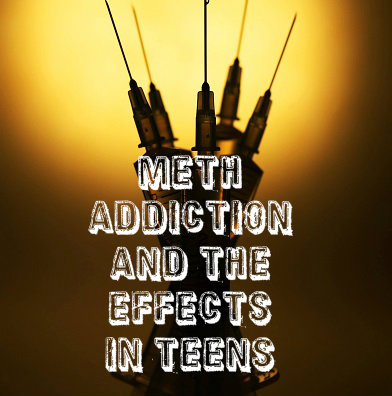 Teen meth addicts will typically use daily or nearly daily. Addiction requiring drug rehab treatment can develop quickly, sometimes within just a few uses. Chronic abuse of the drug leads to tolerance. As one’s tolerance level increases so does the amount of the drug that’s needed in order to achieve the euphoric high.
Teen meth addicts will typically use daily or nearly daily. Addiction requiring drug rehab treatment can develop quickly, sometimes within just a few uses. Chronic abuse of the drug leads to tolerance. As one’s tolerance level increases so does the amount of the drug that’s needed in order to achieve the euphoric high.
Effects Of Meth
Since meth is a stimulant, like cocaine, a teen will experience immediate physical effects, even when the drug is taken in small amounts. Meth users experience increased heart rate and respiration, irregular heartbeat, high body temperature, decreased appetite, inability to sleep, and increased physical activity.
An adolescent with a long-term meth addiction can experience more serious effects. Anxiety, confusion, and extreme weight loss are common. Many develop severe dental problems, such as tooth decay and loss, because the drug reduces output of saliva, which normally protects the mouth, and drug users often have poor dental hygiene.
Teen meth addicts are also at risk because the drug enhances the sex drive. Several studies have found that youth, especially females, who use meth are more likely to engage in risky sexual behaviors [2]. This potentially leads to unsafe sexual practices, including having sex without protection. Research has found a strong association between meth users and sexual risk-taking. A study of adults using meth found they were 1.7 times more likely to have gonorrhea and twice as likely to have chlamydia [3].
Chronic methamphetamine abusers might experience serious psychotic symptoms, including hallucinations, delusions, or paranoia. This can lead to physical problems as well. For instance, a meth user might scratch and gouge at their skin to remove “bugs.” Auditory hallucinations can be particularly dangerous if the addict believes “voices” are commanding him or her to harm others, a symptom that makes drug rehab treatment that much more important.
Meth use in teens can also cause permanent brain damage. Research shows that chronic use causes structural and functional changes to brain areas linked to memory and mood [4, 5]. In addition, brain imaging has shown that meth use changes the dopamine system in a way that reduces verbal learning and motor skills [6]. Using the drug over time also disrupts the body’s normal production of dopamine; as a result, chronic users show severe mood swings.
Signs Of Meth Abuse In Teens
- Euphoric moods (may appear unusually happy)
- Paranoia
- Reduced appetite
- Incessant talking
- Rapid weight loss
- Dilated pupils
- Dry, itchy skin
- Skin sores
- Intense mood swings
- Anxiety, nervousness
- Shaky hands
- Violent or aggressive behavior
- Excessive sweating
Symptoms can become worse as a teen’s meth addiction deepens. For instance, a meth addict often appears undernourished or even sick. He or she may have frequent mood swings, abruptly switching from chatty and friendly one moment to aggressive and hostile the next.
Treatment For Meth Addiction
Due to the serious short-term and long-term health risks, including brain damage and even death, meth addiction in adolescents requires immediate drug rehab treatment. Meth abusers can experience intense withdrawal symptoms, including severe agitation, anxiety, sleeplessness, and strong urges to use. Since withdrawal symptoms can be so powerful, teens should detox in a treatment center where they can be medically monitored.
After the drug is out of the body, your teen will start a treatment plan that will likely have several components based on his or her needs. Currently, there are no approved medications to treat methamphetamine addiction. However, rehab centers have a number of therapies for helping adolescents recover. For example, an addictions specialist may recommend cognitive behavioral therapy. This particular type of therapy helps teens learn more about the factors, such as negative emotions, irrational thoughts, or unhealthy behaviors, that contribute to their drug use. This therapy also teaches them how to deal with those factors in a drug-free way. Contingency management may also be beneficial in a drug treatment program. It provides tangible incentives, such as movie tickets or cash, for drug-free urine samples.
Alternate Therapies For Addiction
Other therapies may help your teen as well. For example, animal-assisted therapy, which involves the use of animals like dogs or horses, can be especially powerful. This treatment approach can help addicted teens reduce anxiety, build self-confidence, and develop trust. Talk with an addiction specialist to learn more about the benefits of animal-assisted therapy.
Family education and counseling will also be essential for guiding your teen through recovery. Educational sessions help parents and family members better understand the nature of addiction. They also show ways to help an addicted teen stay free of drugs. In family counseling, a therapist works with family members to pinpoint and resolve conflicts and communication issues, including those that have played a role in your teen’s decision to use drugs. Family therapy can play an important role in helping your teen avoid a relapse down the road.
Meth Affects The Brain’s Pleasure Center Long After Use
Treating an addiction to meth is challenging, in part, because the brain’s ability to produce dopamine is hampered for up to 6 months or more after drug use stops. As a result, addicts may be unable to experience pleasure. This can make it difficult for them to find enjoyment in even simple activities like spending time with friends, seeing a movie, or relaxing on the beach. This lack of positive emotion can compel many teens to start using again, just so they can feel some form of pleasure.
Yet, despite the challenges, adolescents can fully recover from a methamphetamine addiction. If you suspect or know that your teen is abusing meth, consult a drug rehab treatment as soon as possible – preferably one that is skilled in handling meth abuse and addiction in teens. The staff will work with you to lay out a plan for recovery that gives your teen the best chance for success.
Read More About What Meth Use Can Do To You
References:
[1] http://www.drugabuse.gov/drugs-abuse/methamphetamine
[2] http://www.biomedcentral.com/1471-2431/8/48/abstract
[3] http://www.healio.com/infectious-disease/hiv-aids/news/print/infectious-disease-news/%7B458a3b28-01a8-45ca-af13-dead2d781f8b%7D/methamphetamine-use-increases-risk-of-acquiring-hiv-stds-and-mrsa
[4] http://www.jneurosci.org/content/24/26/6028.long
[5] http://www.ncbi.nlm.nih.gov/pubmed/14706946
[6] http://www.ncbi.nlm.nih.gov/pubmed/11229977
Adolescence is a time of change and self-discovery. For some teens this change involves experimentation with substances, or perhaps even the development of alcohol or drug addiction. That seems to be particularly true for lesbian, gay, bisexual, and transgender (LGBT) teens, a group that shows alarming rates of substance abuse and addiction. If you’re a parent or caregiver, keep reading to learn more about why LGBT teenagers have higher rates of substance abuse and what you can do to help.
LGBT Teen Addiction Statistics
 Research consistently shows that lesbian, gay, bisexual, and transgender teens abuse substances at higher rates than their heterosexual peers. Overall, the odds of abusing substances are 190% higher for LGBT teens than for teens that are heterosexual. However, alcohol and drug use rates are even higher in specific LGBT populations. Bisexual youth have substance abuse rates that are 340% higher than heterosexuals, while females have rates that are 400% higher [1].
Research consistently shows that lesbian, gay, bisexual, and transgender teens abuse substances at higher rates than their heterosexual peers. Overall, the odds of abusing substances are 190% higher for LGBT teens than for teens that are heterosexual. However, alcohol and drug use rates are even higher in specific LGBT populations. Bisexual youth have substance abuse rates that are 340% higher than heterosexuals, while females have rates that are 400% higher [1].
This doesn’t mean that every non-heterosexual teen will become addicted. In fact, research suggests some of the lowest levels of substance abuse are found among students, regardless of sexual orientation, who do not experience homophobic teasing and feel they are in a positive school environment [2].
The Link Between LGBT Teens And Addiction
Identifying as a non-heterosexual person does not in itself lead to alcohol or drug addiction. However, LGBT youth may be forced to deal with unique challenges; it’s these challenges that can raise their risk of addiction significantly.
For instance, lesbian, gay, bisexual, and transgender teenagers are at higher risk for bullying from their peers. Whether the bullying behavior involves being pushed around in a hallway or being victimized on Facebook, it can isolate an adolescent and lead to feelings of depression, which is a risk factor for substance abuse. One study found that teens bullied because they were perceived as gay were more likely to be depressed than those bullied for other reasons or not at all [3].
The threat of violence against LGBT people might also drive a teen to make unhealthy choices that include alcohol or drug abuse. About 21% of all hate crimes in 2011 were based on the victim’s sexual orientation, according to the FBI. Of those, 60% were attacks specifically against gay men and 11% targeted lesbians [4]. Adolescents who feel threatened may also feel the need to self-medicate their severe stress and anxiety with alcohol or drugs.
Parental rejection may also contribute to an LGBT teen’s alcohol or drug addiction. For example, young adults who were rejected by parents for their sexuality during adolescence were almost 4 times more likely to use illicit drugs than those who didn’t experience rejection [5].
Community factors can play a role as well. A study of non-heterosexual adults found that those who lived in states that banned same-sex marriage had a 42% increase in alcohol use disorders [6]. While this particular study examined adults, it’s possible that living in an environment that actively rejects an LGBT teenager’s identity can spur substance abuse.
How To Help LGBT Teens
As a parent or caregiver, it’s essential to help a teenager struggling with substance abuse. Excessive use of alcohol or the abuse of prescription or illicit drugs lays the foundation for a life that’s spent dealing with an addiction rather than living up to potential. Addiction is a chronic mental health condition, although with treatment it can be managed and even overcome. Finding help now gives your teen an opportunity to get back onto a healthier path before an accident or overdose makes it too late.
Seek professional help. Alcohol and drug abuse should be treated by qualified professionals. If possible, choose a recovery facility skilled in working with LGBT youth. These centers will have expertise in helping a lesbian, gay, bisexual, or transgender addict deal with situation-specific emotions and behaviors that play a role in his or her addiction. For example, a rehab center with an LGBT program will work with your teen on matters dealing with sexuality, sexual identity, gender identity, and family dynamics.
If you cannot locate alcohol or drug addiction treatment specifically for an LGBT addict, don’t give up hope. A qualified addiction center can still treat your teen for substance abuse. You’ll work with a specialist to develop a treatment plan that addresses your teenager’s needs. Depending on the substance, he or she may need detoxification (detox) as well as therapy. Since teenagers are heavily influenced by their peers, it’s normal for addicted teens to require residential rehab so they can fully immerse themselves in a safe, substance-free environment.
Substance abuse aftercare is also a critical part of maintaining sobriety in adolescents. Addiction aftercare, which will likely include therapy, ensures that a teen addict continues to have access to the tools that help him or her stay in recovery. In addition, LGBT teens are particularly vulnerable to bullying and, in some cases, violent attacks because of their sexual identity. An aftercare program will help a teenager cope with those challenges in a healthy way.
Create a supportive home. Researchers have found that parental rejection during an LGBT teen’s adolescence boosts the risk of substance abuse. Consider how you or other caregivers have reacted to your teenager’s identification as non-heterosexual. If you or a spouse has reacted with disappointment or anger, or if you’ve rejected the teen outright, start educating yourself in order to better understand your own feelings. Support groups for LGBT parents can be an ideal resource for those struggling to accept a non-heterosexual teenager. You’ll find beneficial support from parents who have experienced the same emotions and challenges.
Encourage your teen to connect. Support from others in the LGBT community will nurture your teenager in a positive way. Building friendships with those who are going through the same life experiences will help him or her feel less isolated. Be sure, however, that these connections are the kinds that encourage sobriety and a healthy lifestyle.
Alcohol and drug addiction can ruin the life of your teen. Don’t wait to get help. Reach out to treatment professionals who are experienced in working with LGBT . Doing so will give your son or daughter the best chance to have an addiction-free life.
References:
[1] http://www.ncbi.nlm.nih.gov/pmc/articles/PMC2680081/
[2] http://www.cdc.gov/lgbthealth/youth.htm
[3] http://library.wheelerclinic.org/poc/view_doc.php?type=news&id=155391&cn=5
[4] http://www.fbi.gov/about-us/cjis/ucr/hate-crime/2011/narratives/incidents-and-offenses
[5] http://pediatrics.aappublications.org/content/123/1/346.abstract
[6] http://ajph.aphapublications.org/doi/abs/10.2105/AJPH.2009.168815
A recent study estimates that close to 10% of pregnant women drink alcohol. Given the potential harm that can come to a fetus when exposed to alcohol during development, and the fact that vast majority of females at child bearing age were probably taught this at some point in their lives, this number is truly upsetting. Unfortunately, it’s also not shocking.
Some people still think that alcoholism (or other forms of addiction) is a moral failing rather than a bona fide medical disorder. Sometimes the impulse to drink can be so great that an alcoholic will put the importance of a drink over the safety and well-being of loved ones. It happens all the time with parents of young children, even when there is overwhelming evidence that the parent is a good person and truly loves their kids. Who doesn’t know someone who grew up in an alcoholic household? Is there any reason to think that the simple fact of pregnancy would be able to reign in such a terrible disease?
Condemning Addicted Pregnant Women vs. Helping Them Abstain From Alcohol
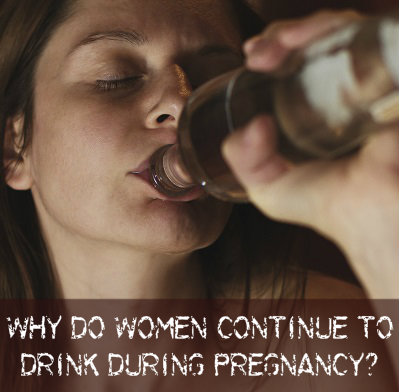 Instead of chastising and condemning pregnant women who drink, we should be devising ways to help them abstain from alcohol during gestation. For hard core alcoholics, it is entirely possible that the only way to stop them from drinking for close to a year would be to physically restrain them. Barring that, however, there are things that we can do to try to reduce the incidence of drinking while pregnant.
Instead of chastising and condemning pregnant women who drink, we should be devising ways to help them abstain from alcohol during gestation. For hard core alcoholics, it is entirely possible that the only way to stop them from drinking for close to a year would be to physically restrain them. Barring that, however, there are things that we can do to try to reduce the incidence of drinking while pregnant.
We, as a society, must be more proactive in teaching people about the risk of fetal alcohol syndrome, a complication that can happen if a mother drinks while pregnant. People born with fetal alcohol syndrome will likely have abnormal faces, growth issues, and problems in the central nervous system. These issues will not improve over time and the neurological impairments can lead to learning disabilities and behavioral issues, like attention deficit disorder. Fetal alcohol syndrome affects up to 3 million people in the US alone.
The problem with teaching about the dangers of fetal alcohol syndrome is that evidence is murky when it comes to determining how much alcohol can safely be consumed before a fetus is put at risk. It used to be, at least prior to the 1980‘s, that doctors never restricted women from drinking alcohol during pregnancy. However, at some point the medical establishment changed its tune and soon no amount of alcohol was permitted during pregnancy. Now, conflicting information can be found everywhere.
How Exactly Does Fetal Alcohol Syndrome Happen?
Babies do not inherit fetal alcohol syndrome. Instead, the ingested alcohol actually damages developing neurons and destroys brain cells. The damage can occur at any point in fetal development, even before the mother knows that she is pregnant. Once the cells have been compromised, there is presently no way to undo the damage.
Educate Teens On Abstaining From Alcohol If Having Sex
Without knowing exactly how much alcohol is safe for fetuses, the only safe option for pregnant women is to avoid drinking altogether. Since drug-related birth defects affect not only the child but society in general, more resources need to be expended to help keep pregnant alcoholics sober during gestation and continually remind women of all ages about the dangers of exposing themselves to toxic substances if there is a chance they could become pregnant. Since alcohol and sex many times go hand in hand, it is a responsible and appropriate discussion to have with kids, especially given how prevalent substance abuse is in some sub-teen populations.
Addiction During Pregnancy – All Of Our Concern
In addition to increasing the amount of materials available to women of child-bearing age regarding the dangers of drinking, medical professionals in all venues need to be more vigilant in identifying mothers who are actively drinking or are at risk of developing a drinking problem during pregnancy. Although alcohol rehab programs have begun offering specialized treatment programs for addicted mothers, the number of available beds is woefully inadequate to handle the sheer number of people requiring treatment. Hopefully governments will begin to see addiction during pregnancy as a public health crises and funnel adequate resources into handling the disease. If someone you know is drinking during pregnancy, encourage them to seek help.
News accounts of the party drug known as “molly” seem to have been replaced recently with reports of a much more frightening drug called krokodil. Health officials are now concerned that the synthetic drug, which is said to deliver a heroin-like high, has made its way into the United States. Physicians in Utah, Arizona, and, most recently, Illinois, have reported possible cases of krokodil use, putting drug addiction and health experts on alert.
Krokodil Facts
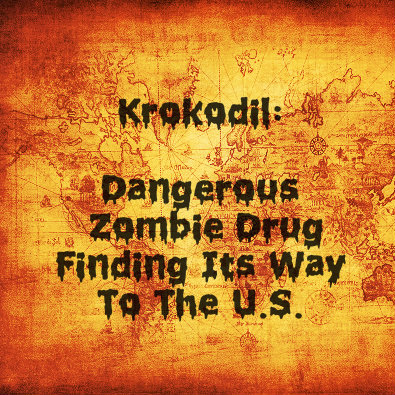 Krokodil is a homemade version of a drug called desomorphine, which was developed in the 1930s as a morphine alternative. However, researchers found that it was up to 10 times stronger than morphine, so its use was discontinued. Illicit drug users now re-create desomorphine by using a base made from codeine, a narcotic used to relieve pain and suppress coughs.
Krokodil is a homemade version of a drug called desomorphine, which was developed in the 1930s as a morphine alternative. However, researchers found that it was up to 10 times stronger than morphine, so its use was discontinued. Illicit drug users now re-create desomorphine by using a base made from codeine, a narcotic used to relieve pain and suppress coughs.
The drug, which Time has called a “dirty cousin of morphine,” also contains a dangerous mix of alcohol, paint thinner, gasoline and lighter fluid. The mixture includes red phosphorus as well, a substance used in the striking pads of matchboxes. Iodine is another ingredient — one that often leaves addicts enveloped in a tell-tale heavy iodine odor that, as one Russian physician noted, can’t be washed out of clothing.
Krokodil can be easily concocted at home in about 30 minutes. Users inject krokodil wherever they find available veins on their body, from their head to their feet. Injecting the drug delivers a high quickly — in as little as five minutes. This is in contrast to the one to two hours it can take to get high from drugs in pill or capsule form.
This dangerous substance delivers a more potent high than heroin. However, the euphoric feeling doesn’t last as long, at anywhere from 90 minutes to two hours. Addiction occurs quickly, catapulting users into a never-ending cycle that moves from cooking the drug to getting high to cooking the next batch. Users interviewed for news accounts have reported going for days without sleep as they binged on krokodil.
Krokodil Effects
Anyone who has seen the sensational-sounding online headlines about this drug addiction may have written them off as attempts by websites to generate traffic: “Zombie apocalypse drug reaches U.S.” or “Krokodil –The drug that eats junkies.” However, headlines like these are not exaggerations. The drug gets its name from its effect on the skin and underlying tissue. It’s believed the damage is caused not by the psychoactive ingredient desomorphine, but rather the caustic substances used in the concoction. These chemicals destroy blood vessels and tissue. Unsanitary drug cooking and injection practices also likely play a role in the destruction.
After krokodil is injected, blood vessels burst and tissue surrounding the injection site dies. As a result, the skin takes on a greenish, scaly appearance that mimics that of a crocodile, or krokodil in Russian. The process leads to open, festering wounds and infections as the skin rots from the inside out, eventually causing gangrene. Those with an addiction to krokodil can be left with dead skin that peels away to reveal tissue and bone underneath. Many users experience blood poisoning. The damage addicts suffer typically requires intensive wound care or skin grafts. Amputations are common.
Over time, the drug’s acidity also dissolves porous bone, especially in the jawbone and teeth. The effect has been compared to “meth mouth,” which is the unsightly rotting of the gums and teeth often seen in methamphetamine addicts. Chronic krokodil abusers frequently lose their teeth.
The average life expectancy of a krokodil addict is estimated to be very short at only two to three years. However, even those who are able to overcome the addiction are left with lasting and devastating physical effects. Krokodil causes brain damage in chronic users, leaving them with speech impediments and impaired motor skills, often in the form of jerky movements. In fact, the disjointed movements combined with addicts’ skin and tissue injuries have caused some to deem krokodil the “zombie” drug.
Krokodil In The U.S.
According to a report published in the Journal of Addictive Diseases, this homemade drug is believed to have first been used in Russia in 2003. For years, its use was confined largely to Russia and the surrounding countries that had been part of the Soviet Union. Experts estimate about 100,000 Russians have become addicted to krokodil and other illicit homemade drugs. By 2011, krokodil began moving into Germany and Norway. The ingredients are widely available, and users freely circulate recipes that make it easy to create batches on a home stove. It also costs a fraction of what users pay for heroin.
Currently, the U.S. incidents are being classified as possible cases; although the physical symptoms appear to be consistent with krokodil use, drug addiction experts have not been able to obtain samples of the drug, nor have they been able to get blood or urine samples that might confirm its use. Obtaining positive samples from addicts may be challenging because the body metabolizes the drug so quickly.
Krokodil Treatment
Because of the very serious side effects, treatment must start as soon as possible. Treating this addiction is a complex process, requiring a joint effort by physicians and addiction professionals. The obvious physical symptoms may require emergency care, making hospitalization necessary. As medical staff members try to stem the physical damage, a skilled addictions team will need to address the severe withdrawal symptoms.
Although the drug mimics the euphoric high of heroin, there are differences regarding withdrawal. Heroin’s physical withdrawal symptoms last about a week, while krokodil’s can draw out for as long as a month. Russian addiction experts say it causes such intense pain that it’s common to tranquilize patients during withdrawal. Addicts also experience seizures, fever, and vomiting.
Following withdrawal, a drug rehab team will start the addict on an intensive therapy program. Treatment will likely include extended inpatient rehab along with individual and group therapy. Long-term aftercare, including sober living, may also be part of the recovery plan. In addition, an addict might need physical or occupational therapy to address the physical aftermath of this addiction.
Krokodil addiction must be treated immediately by professional addiction treatment specialists. If you or someone you love is using this extremely dangerous substance, don’t wait to get help. Contact a drug addiction recovery center today.
Read More Russia’s Deadly Krokodil
29 Oct 2013
What Drives Teens To Try Ecstasy?
Ecstasy is a widespread term used for MDMA or Molly, an illegal amphetamine-like drug that also has some of the properties of hallucinogenic substances. In a study published in October 2013 in the journal Addiction, a multi-institution Australian research team examined some of the main factors that drive involvement in Ecstasy use. These researchers found that the critical factors include one’s social environment, previous history of drug use and level of a mental state called psychological distress.
Effects And Details Of Ecstasy
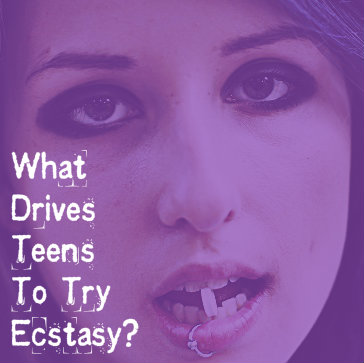 The full chemical name of Ecstasy (MDMA) is methylenedioxymethamphetamine. Outside of very limited situations, manufacturers produce this substance illegally, and distributors also usually sell it outside of legal channels. The stimulant effects of Ecstasy produce alertness and high levels of energy, while the hallucinogen-like effects of the drug produce an impaired ability to track the passing of time and unusual sensitivity to sound and touch. In addition, the drug commonly produces a benevolent mental outlook and an increased sense of social/spiritual connection with others. Ecstasy users typically view these physical and psychological changes as the drug’s desirable effects.
The full chemical name of Ecstasy (MDMA) is methylenedioxymethamphetamine. Outside of very limited situations, manufacturers produce this substance illegally, and distributors also usually sell it outside of legal channels. The stimulant effects of Ecstasy produce alertness and high levels of energy, while the hallucinogen-like effects of the drug produce an impaired ability to track the passing of time and unusual sensitivity to sound and touch. In addition, the drug commonly produces a benevolent mental outlook and an increased sense of social/spiritual connection with others. Ecstasy users typically view these physical and psychological changes as the drug’s desirable effects.
The use of Ecstasy is heavily associated with attendance at parties or dances that feature some form of electronic music; however, use can also take place in a range of other settings. The drug disrupts the body’s ability to regulate its internal temperature. In combination with the high, external body heat levels commonly found at the parties and dances where Ecstasy use occurs, this temperature dysregulation can lead to a dangerous, sometimes lethal condition called hyperthermia, which sets in when the body’s temperature rises above a sustainable level. Additional, major short-term health problems associated with Ecstasy intake include seizures and the development of significant heartbeat instability. Typically, people who take large amounts of the drug in a short span of time have the highest risks for experiencing these problems.
Psychological Distress And Ecstasy
Psychological distress is a term used to describe the presence of a range of emotional states that can undermine a person’s sense of mental well-being. Examples of these emotions include nervousness, hopelessness, restlessness and a “down” mood. By itself, psychological distress does not constitute a diagnosable mental health disorder. However, the underlying effects of a distressed psychological outlook are known contributors to the development of a number of diagnosable mental illnesses, including schizophrenia, bipolar disorder, anxiety disorders and major depression. According to figures compiled by the federal Substance Abuse and Mental Health Services Administration (SAMHSA), young adults experience psychological distress considerably more often than middle-aged adults or elderly adults, and also receive help for their condition less often than adults in these age groups.
Social Environment, Past Drug Use – Factors In Ecstasy Use
In the study published in Addiction, researchers from five Australian institutions used an assessment of 204 young adults between the ages of 19 and 23 to look at the factors that contribute to the start of participation in Ecstasy use. At the beginning of the study, none of these adults had used Ecstasy; however, over 40 percent of them had been offered the drug at some point. Six months later, the researchers identified the participants who had eventually accepted an offer to take Ecstasy and examined the reasons for this change in behavior.
After completing their assessment, the researchers concluded that factors related to an individual’s social environment played the most prominent role in the onset of Ecstasy use among the study’s young adults. Specific factors cited include having social interactions with a lot of people who already use the drug and attending the electronic music/dance events classically associated with Ecstasy use. The presence of the symptoms of psychological distress also played a meaningful role, as did a previous history of using marijuana or other forms of cannabis. However, these factors did not rise to the same level of importance as social environment.
How Study Results Can Help Ecstasy Drug Education
The authors of the study published in Addiction believe that their research can play a role in efforts aimed at curbing the use of Ecstasy and warning users about the drug’s major pitfalls. If successful, such efforts would likely have two components: a large-scale education campaign designed to reach broad segments of the population and a smaller, more targeted campaign designed to reach young adults and other individuals exposed to known risk factors for Ecstasy use.
A recent report from Olympia, WA, calls for a citywide conversation regarding the growing problem of heroin abuse plaguing the area—particularly drawing attention to the widespread issue of dirty needles. Heroin abuse is damaging in a host of more obvious ways—addiction, destroyed relationships, torched careers and the direct physical consequences—but one of the biggest issues comes from the use of unclean needles. This conversation isn’t a comfortable one for many citizens, but it’s a problem that will not go away, particularly with the epidemic-level prescription drug abuse gripping the nation.
Prescription Drugs: A Gateway To Heroin?
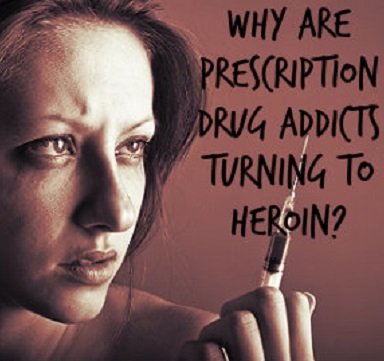 The prescription drug addiction crisis that America is facing has already been shown to have led users into heroin abuse. Understanding why requires some basic knowledge of the chemical similarity between the substances. The most effective painkillers are opioid drugs like oxycodone and hydrocodone (the active ingredients in OxyContin and Vicodin, respectively), substances derived from the opium poppy. This plant is the ultimate source of heroin, and the drugs are therefore effectively the same. Exceeding your doctor’s prescribed dosage heightens the narcotic effect of the substance, making it roughly comparable to taking a dose of heroin. This is why 12 million Americans used prescription painkillers non-medically in 2010 and why so many people become addicted and many of them overdose—but the supply isn’t always easy to come by.
The prescription drug addiction crisis that America is facing has already been shown to have led users into heroin abuse. Understanding why requires some basic knowledge of the chemical similarity between the substances. The most effective painkillers are opioid drugs like oxycodone and hydrocodone (the active ingredients in OxyContin and Vicodin, respectively), substances derived from the opium poppy. This plant is the ultimate source of heroin, and the drugs are therefore effectively the same. Exceeding your doctor’s prescribed dosage heightens the narcotic effect of the substance, making it roughly comparable to taking a dose of heroin. This is why 12 million Americans used prescription painkillers non-medically in 2010 and why so many people become addicted and many of them overdose—but the supply isn’t always easy to come by.
One of the unexpected downsides of cracking down on prescription drug abuse is that many people are left addicted to opiates but without the pills to satisfy their cravings. This problem is “solved” by many of the users by buying heroin — it’s easier to get and is cheaper than the medically legal versions prescribed by doctors.
Hidden Drug Problem
Olympia, WA, is experiencing an increase in heroin use. Previously, the heroin problem was primarily confined to grim alleyways in the inner city, but now—thanks in part to narcotic prescription medicines—it’s expanded into the suburbs, spreading across the city like a disease. While the obvious issues are the crimes associated with heroin abuse and the physical harm to the user, another immediate problem tied to increased heroin use is that of dirty needles littering the streets. The local paper, the “Olympian,” is calling for an open and frank discussion on the problem within the community.
Dirty Needles And Blood-Borne Viruses
Research from 2004 shows that one-fifth of HIV infections and the majority of hepatitis C infections were related to intravenous drug use, and one-quarter of America’s injecting drug users have HIV or AIDS. The reason is simple: with intravenous drug use, any case where two users share a needle represents a potential infection; the blood invariably remaining on the needle being plunged directly into the vein of the next user. In short, all needle-sharing is equivalent to unprotected sex. This is why needle-sharing is particularly ill-advised, but thinking realistically (particularly when accounting for the priorities of someone dependent on opiates) it’s clear that many users will take the risk to get their fix.
Needle Exchange Programs: Encouraging Addiction Or A Vital Service?
The problem with needle sharing is why needle exchange programs were created. The premise is simple: offer intravenous drug users a safe place to dispose of their used needles and offer them clean injecting equipment to reduce the risk of infections in the future. Olympia provides such a service and has for nearly 20 years. In 2012, about 950,000 dirty needles were collected and marginally fewer clean ones were distributed. The fact that the number of collections exceeds the number of distributions is a source of concern (the widespread discarded needles in locations like parks risk infecting children or non-using adults), but overall, the program undoubtedly reduces the numbers of blood-borne viruses.
However, critics argue that it isn’t right to distribute equipment to drug users who clearly have a problem, and that the programs merely allow them to continue on in addiction. This is an understandable criticism, but public health officials and those who operate the programs counter that the benefits of the programs outweigh the potential moral issues. Reducing the spread of HIV and hepatitis is a huge benefit, and it’s clear that the users aren’t only continuing to take heroin because they’ve been given free clean equipment; they are struggling with addiction and would continue using either way.
Harm Reduction As A Last Resort
It’s unreasonable to assume that every heroin user—or indeed every prescription drug user—will be able to quit effectively. Human history has repeatedly shown that not to be the case. This is why, in the most extreme cases, it’s better to focus on reducing harm as much as possible. The individual might be struggling to battle his demons and get clean, but does that mean we should stand by and do nothing while he risks HIV infection? It might make us feel like we live in a more harmonious world to pretend that these problems don’t exist, but it doesn’t improve the situation. If you turn a blind eye to the unnecessary suffering, you’d be fooling yourself to think it stopped happening.
See How Prescription Drug Abuse Is A Growing Problem On College Campuses – Click Here


